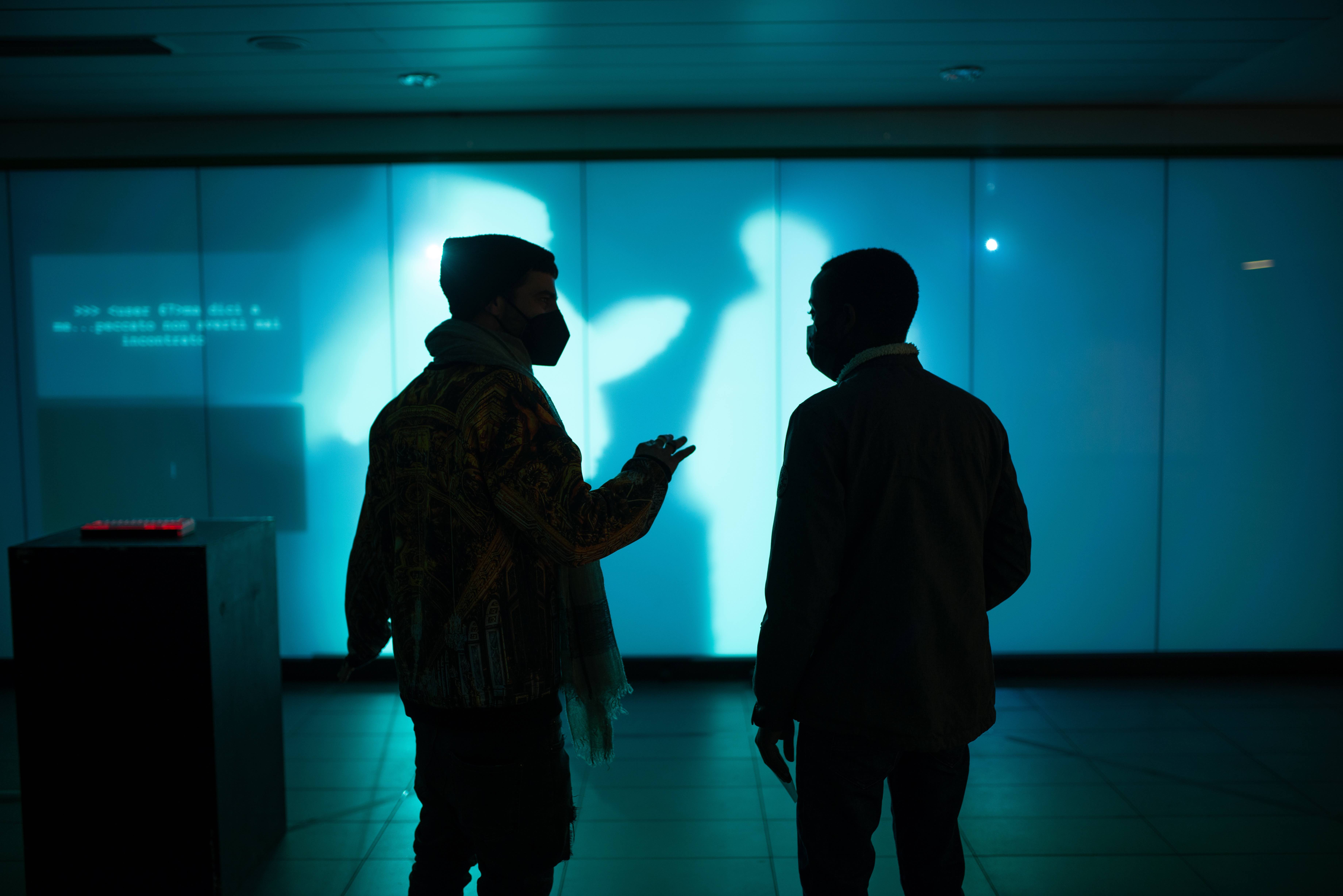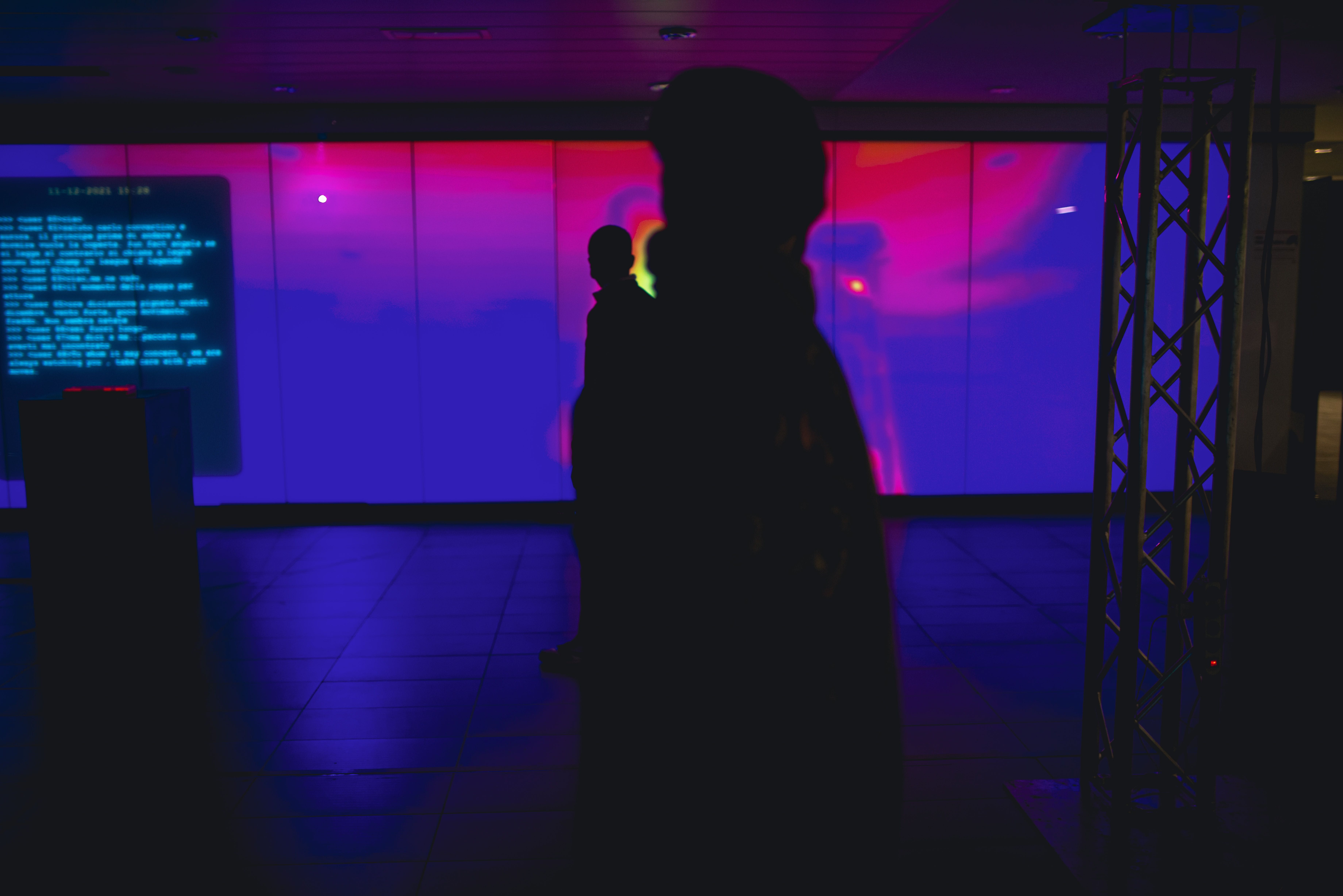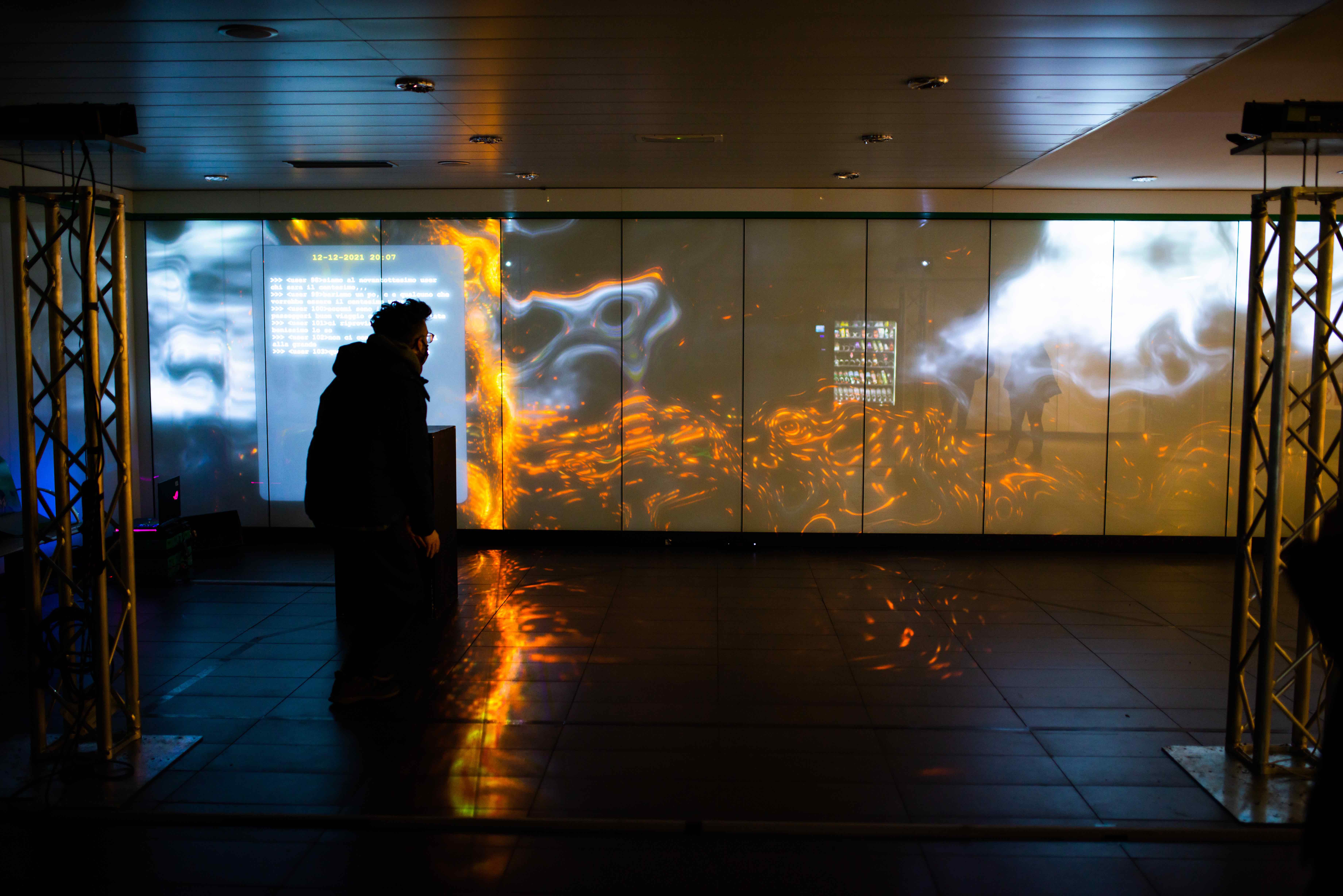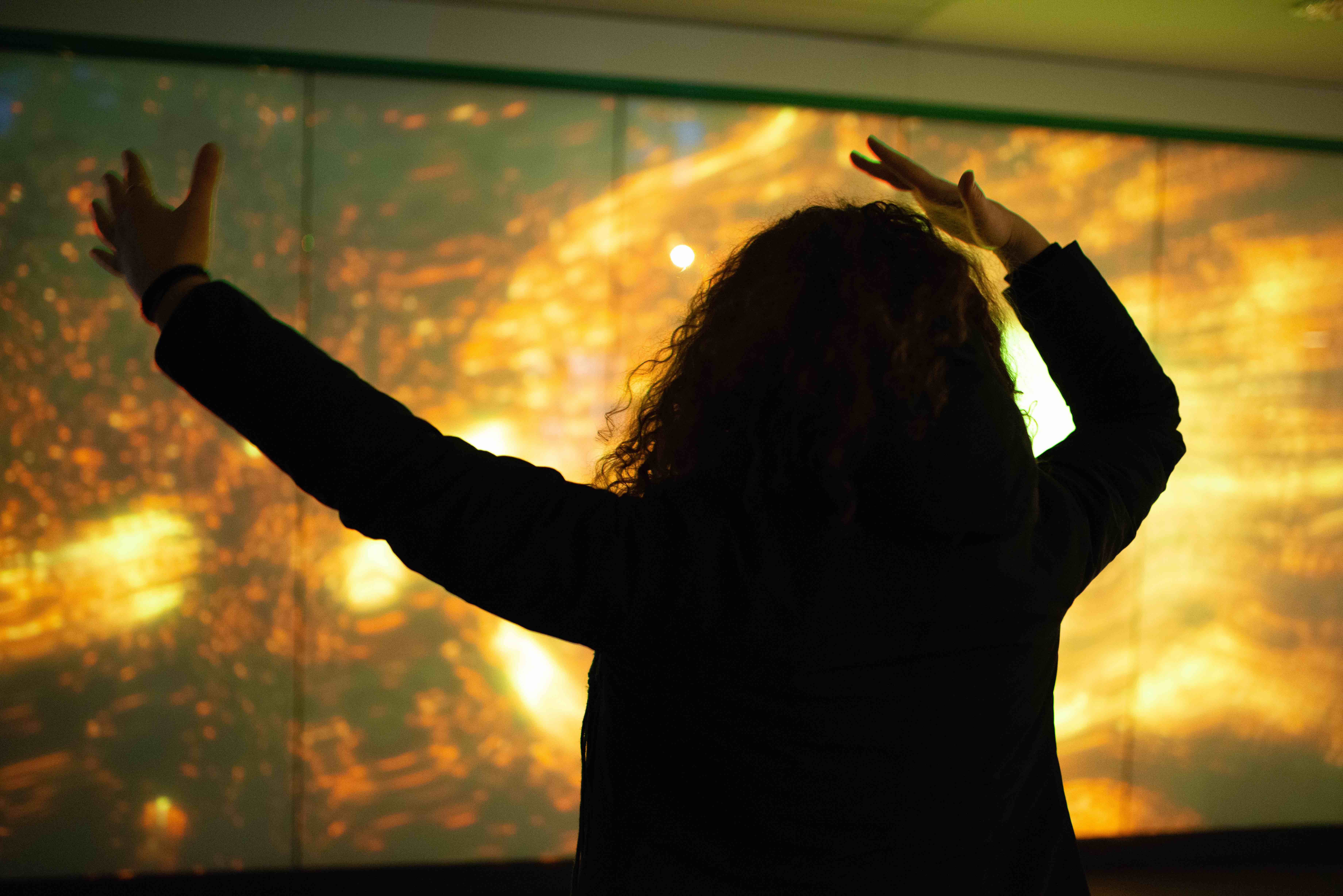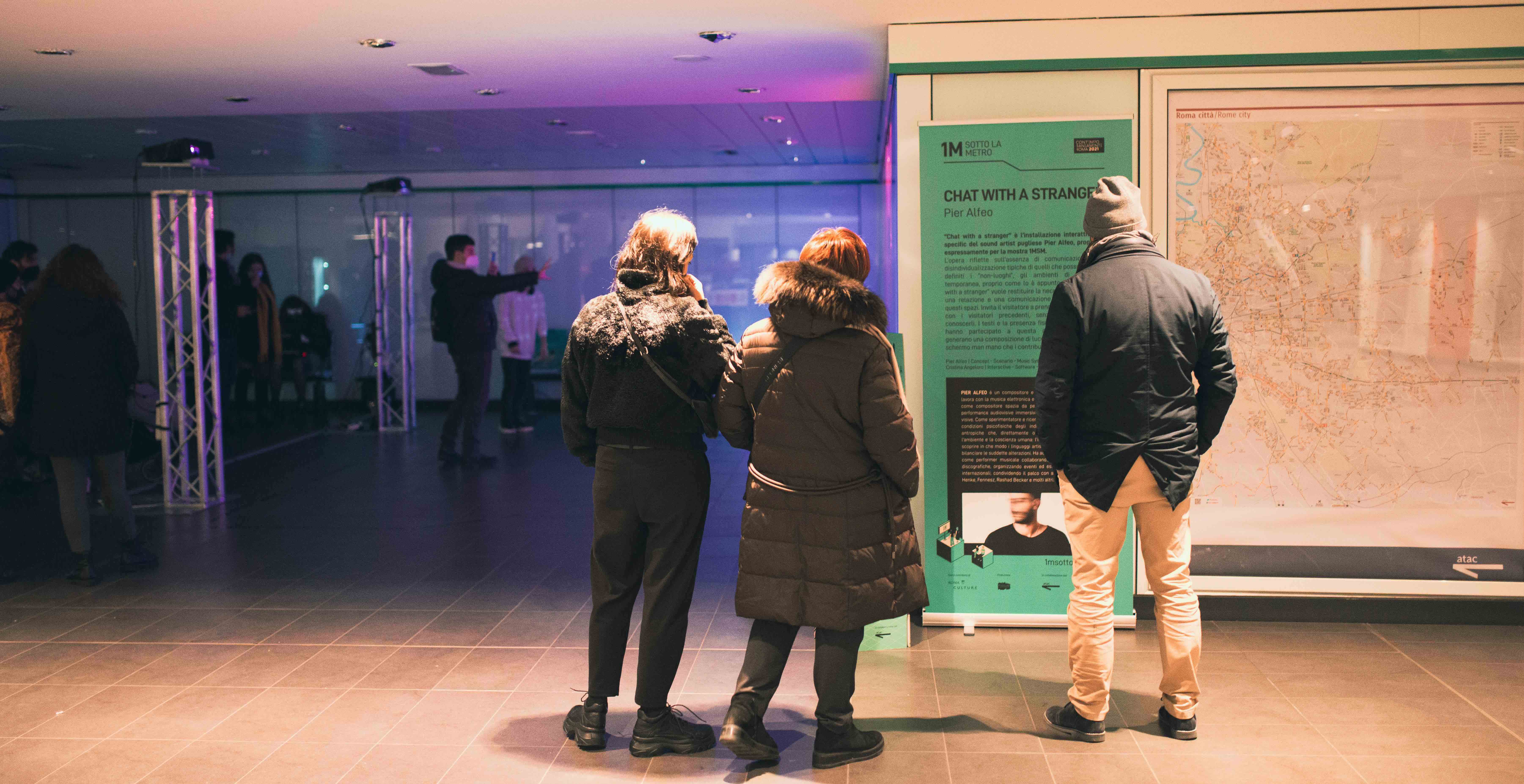CHAT WITH A STRANGER
2021 Ph~ Elizaveta Yudina
Ph~ Elizaveta Yudina
Note
INTERACTIVE Audio/Video Installation
This project stems from a reflection on the concept of non-place. These are the places marked by transience and only temporary permanence, such as airports, subways or shopping malls, inside of which a person's identity is shed. This produces anonymous identities, which can be represented by a number, coordinates and a date. What makes these artificial spaces peculiar is the absence of interaction between individuals, the selfsame individuals which are part of the ever-transitory flows. As they move, they create a very dense and complex network which is comprised of nodes (vertices, or the person) and arcs (edges, or the connections), interpersonal structures which could in turn be visualized into tree graphs. The project means to restore this individuality, the need to establish relationships and communication between passersby, seen as shapeless thermal energies weaving this large interconnected tapestry. People pass through non-places, yet no one really lives in there: they are merely directed by cold machines and signs from one node to another. These spaces were developed to be ergonomic and highly comfortable, so the intent of "Chat with a stranger" is to use technology in order to stop and reverse this loss of individualization.
Credits
Pier Alfeo :: Concept - Scenario - Aesthetics - Music System
Cristina Angeloro :: Interactive - Software - Visual Design
Duration
00m 00s
Locations
1MetroSottoLaMetro Festival | Rome | IT 2021
Set up
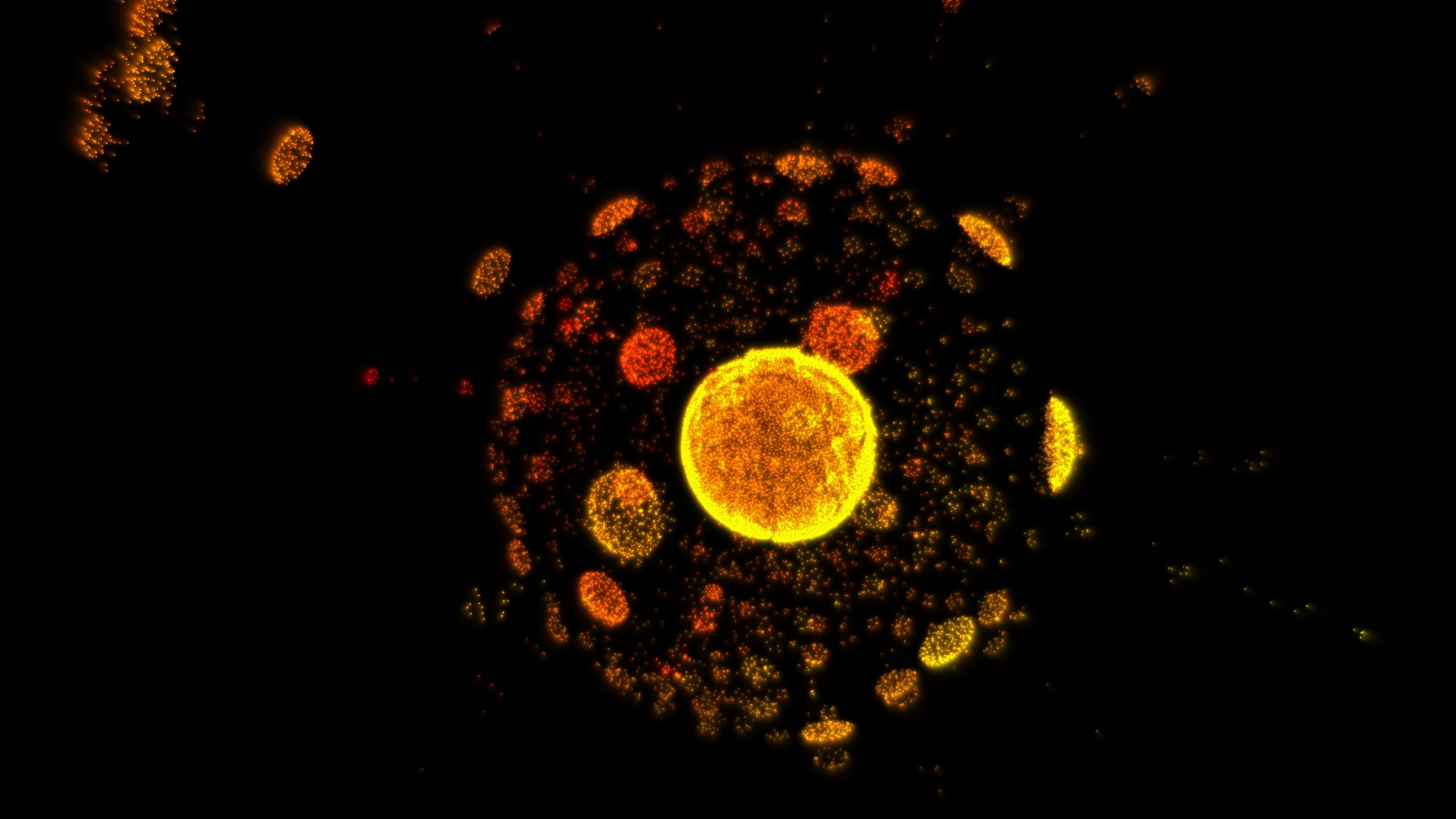

The work is an interactive audio-visual installation, consisting of a Kinect, an interactive projection, a modular soundtrack and a keyboard. Structured into three phases, or moments, the installation guides the visitor through the branches of a narrative. In the first phase, reaching the interaction range, the visitor's attention is caught by the sight of a white sterile silhouette shorn of identity. A message is displayed on the screen, and they are asked to reply to a previous User (so a previous visitor) through a keyboard located on another pedestal. Once replied to the previous user, the system transitions to phase two. The screen displays the thermal measurements of the people in the room, unveiling the chatlog which built up over time in previous interactions. The system executes certain algorithms in the background, data flows are visible in the projection, customizing and changing the contents which will be present in the next interaction, processing the typed "strings" and other parameters. Moments later, the system is ready for the last part. In this phase (which will last for as long as the visitor remains in the range of interaction), visitors find themselves surrounded by the memories of past visits, this stream of "living energies" manifesting in an array of particles, sounds and gestures. An interactive 3D environment generates new identities, bending time and the concept of these "places" which are distancing people instead of gathering them. As the user leaves the range of interaaction, the system reboots from the starting point - inheriting however a message, a memory, the trace of someone who passed through.
